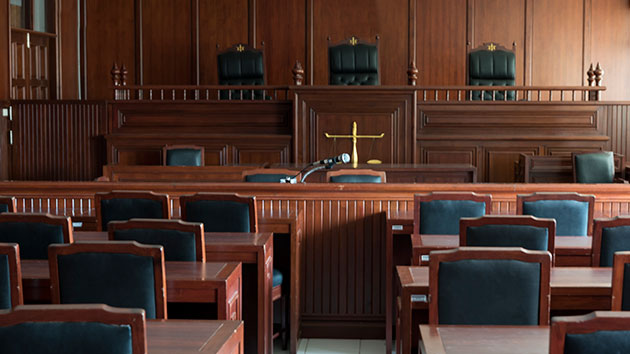
(NEW YORK) — Russian President Vladimir Putin’s “special military operation” into neighboring Ukraine began on Feb. 24, with Russian troops invading from Belarus, to the north, and Russia, to the east. Russian forces have since been met with “stiff resistance” from Ukrainians, according to U.S. officials.
In recent days, Russian forces have retreated from northern Ukraine, leaving behind a trail of death and destruction. After graphic images emerged of civilians lying dead in the streets of Bucha, a town northwest of Kyiv, the United States and European countries accused Russia of committing war crimes.
Latest headlines:
-Russia appoints new general as nation reaches ‘new lows of depravity and brutality’: US
-Mariupol death toll could be over 20,000: Mayor
-Russians still attacking Mariupol, partially blocking Kharkiv: Ukraine
-Over 4.5 million refugees have fled Ukraine: UNHCR
Here’s how the news is developing. All times Eastern.
Apr 11, 6:45 pm
Russian troops left mines ‘everywhere,’ Zelenskyy says
Ukrainian officials are focusing on clearing the mines left behind by Russian forces before they retreated the region surrounding Kyiv, Ukrainian President Volodymyr Zelenskyy announced in his address Monday.
The Russian troops deliberately left mines “everywhere,” Zelenskyy said, adding that they did so “to kill or maim as many of our people as possible, even when they were forced to withdraw from our land.”
“Russian troops left behind tens, if not hundreds of thousands, of dangerous objects,” Zelenskyy said.
Zelenskyy said Ukrainian officials are also focusing on procuring more arms. The country is not getting the lethal aid it needs to end the war sooner, he said.
The president also called on the European Union to include an oil embargo in its sixth round of sanctions toward Russia, saying that unless they do, another round of sanctions will be received by Moscow “with a smile.”
ABC News’ Christine Theodorou
Apr 11, 3:45 pm
CEO of World Central Kitchen opens up about ‘catastrophic’ train station attack
Nate Mook, CEO of World Central Kitchen, opened up to ABC News Live on Monday about what he saw in the immediate aftermath of Friday’s attack on a Ukrainian train station that killed at least 57 people.
Mook said Friday was the third day he was spending near the Kramatorsk train station planning food distribution for Ukrainians trying to flee the region.
On Friday, Mook said, “We had just driven by the station, I looked down and saw 1,000 people or so on the platform. And we got about two minutes beyond the station when we heard the explosions happen.”
“We headed over there … the scene was horrific. It was catastrophic,” Mook said. “There was damage both on the platform and in front of the station where innocent civilians were waiting … there was remnants of a rocket on the ground.”
One of the areas that was really hit the hardest was actually a waiting area for seniors,” Mook said. “They had a little waiting area set up, they had chairs, they had a little tent area. And this is right where the rocket landed and why so many were killed.”
Mook added, “I think there was a little bit of shock around this idea that the train station itself, with just innocent civilians, would be targeted, because there’s no strategic value to it — it is just murder.”
Apr 11, 2:32 pm
US considering training more Ukrainians in US
A small group of Ukrainian troops who were in the U.S. for pre-planned military training when Russia invaded their country returned home Sunday, a senior U.S. defense official told reporters Monday. The Pentagon took advantage of their presence to train them on the Switchblade drones the U.S. is sending to aid Ukraine.
The official said the U.S. is looking into training more Ukrainians, possibly in the U.S.
“There’s been no policy decision that I’m aware of that would prevent them from coming to the United States,” the official said.
But the Pentagon is considering several options.
“As for additional training on systems like the Switchblade, we are reviewing and thinking about and considering a number of different options for how we could manage to get more Ukrainians trained on that system,” the official said.
ABC News’ Matt Seyler
Apr 11, 2:23 pm
Russia appoints new general as nation reaches ‘new lows of depravity and brutality’: US
Gen. Alexander Dvornikov has been appointed to lead Russia’s invasion effort, a senior U.S. defense official told reporters Monday. Dvornikov previously led Russians in the south of Ukraine, where they saw the most success.
“In the early days and weeks of the conflict, the Russians did achieve more success in the south than they achieved certainly in the north. I have no idea that was a factor in his selection,” the official said.
But the official noted that Russian efforts in the south are now largely stalled, with no progress against Mariupol since last week and no success advancing on Mykolayiv.
The official said it is unclear how Dvornikov’s selection could affect the fighting but said a pattern of brutality remains constant.
“What is clear is that the Russians continued to sink to new lows of depravity and brutality, as we saw with the missile strike on the train station last week,” the official said.
The official said some of the Russian troops that withdrew from northern Ukraine are starting to move east toward the Russian cities of Belgorod and Valuyki.
“We believe that this line of vehicles that we talked about that are north of Izium came out of the Belgorod/Valuyki region, from there to the south,” the official said.
ABC News’ Matt Seyler
Copyright © 2022, ABC Audio. All rights reserved.








